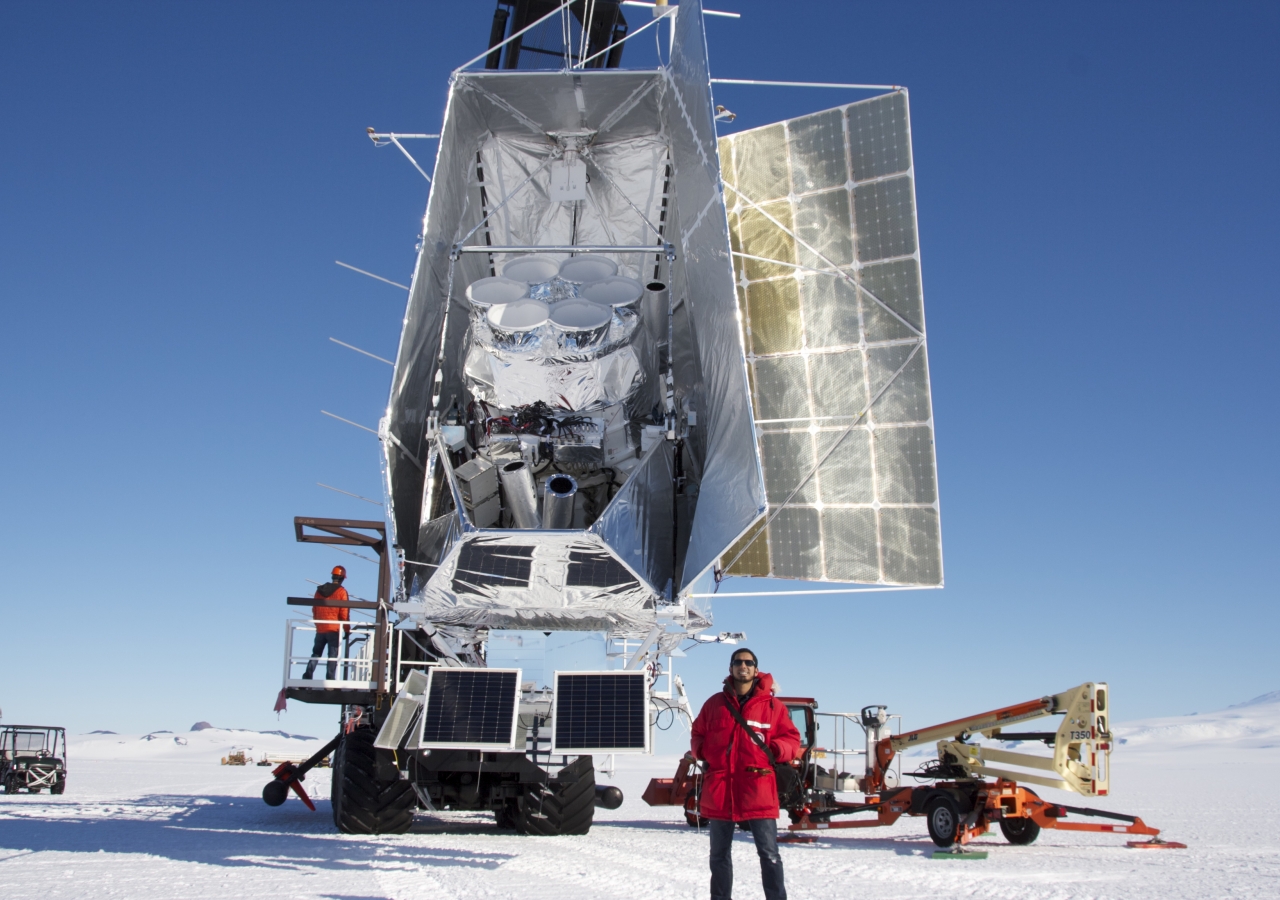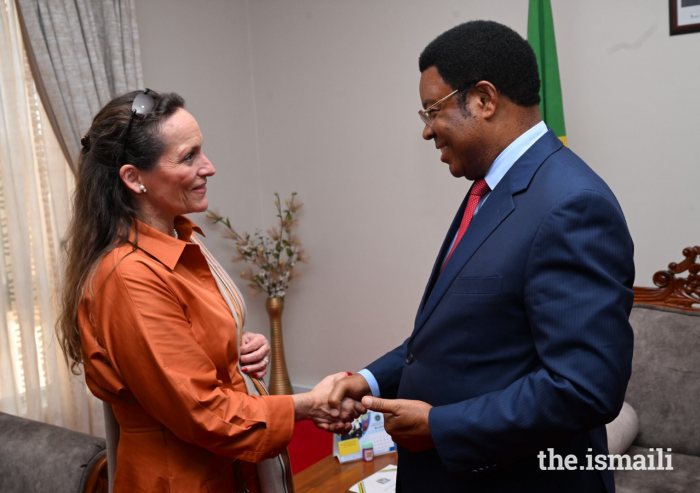jamil-shariff-3

1. Prepare for change
Jamil grew up in Edmonton, fascinated by the Universe from an early age. Growing up he read books about astronomy, had his own telescope, and volunteered at the Edmonton Space and Science Centre. Yet, like many others in their final years of high school, Jamil still wasn’t sure what he wanted to study at university.
After completing his first year in a general science programme at the University of Alberta, Jamil decided it wasn’t the right path for him. He found an engineering & physics hybrid programme at the University of British Columbia (UBC) and took a big leap, moving away from his home and starting again somewhere else.
In the universe of career growth, change often reveals new opportunities. Jamil’s path has been defined not just by his successes but also by the challenge and change he overcame.
"The path is circuitous, it's not linear. You loop around, pivot, and restart,” Jamil said. “A key part of the process is understanding that you’re never going to have complete information and you’re never going to feel 100 percent confident in a big life decision that sets you down a path. The decision to transfer and move away from home — that felt like a leap and I had to do it a little bit based on faith, no matter how much information I gathered first. When you’re 18, you don’t know what’s out there. What you can do to maximise your chances is to pursue all opportunities: talk to your professors, do the summer internships, attend the networking events. University is what you make of it.”
2. Find your niche
During his time at UBC, Jamil was able to participate in a co-operative education programme, working at a full-time placement in between academic terms. One of his co-op assignments was working deep underground in a particle physics lab situated in a Northern Ontario mine. Two of his other co-ops involved building new instruments that would be installed on ground-based and space-based telescopes: new hardware to enable new scientific discoveries.
"This field of astronomical instrumentation combines engineering and physics. If I hadn't been through the co-op programme, I wouldn't have discovered that niche and realised I wanted to fill it,” Jamil said.
And filling that niche has led Jamil to some extraordinary career achievements. While pursuing his PhD at the University of Toronto, Jamil was part of an international team of researchers who designed, built, and operated telescopes that allowed them to collect data which has furthered our understanding of the Universe. Now, Jamil works at MDA, engineering technology for Canadarm3 — a robotic arm that will be part of a space station planned for lunar orbit towards the end of this decade.
jamil-shariff-4

3. Expect the unexpected
During his PhD, Jamil ended up living and working in Antarctica of all places.
The team he was working with wanted to measure something very specific about the early Universe, but no telescope existed that could collect such specific data, which requires observations from above Earth’s atmosphere So Jamil and his team built balloon-borne telescopes that could collect the data they needed. And it turns out, the huge scientific balloons carrying these telescopes can’t fly over cities, nor through day and night cycles — leading the team to Antarctica as their launch site.
“Who could have predicted I’d end up in Antarctica?” Jamil said. “For so many projects, not just science, you have to be in a certain place at a certain time, and if you’re going to do it — go all out.”
And of course, when you’re expecting the unexpected, be ready for setbacks.
“The telescope flight was delayed by three or four years and I was close to the end of my PhD,” Jamil said. “I almost didn’t make it -- it was almost time to graduate and move on, and sometimes that’s how these projects go. I was writing my thesis in Antarctica while trying to fly this telescope to gather data that I wouldn’t even be able to use until after my PhD was already over.”
During their time in Antarctica, Jamil and his team were able to gather data aimed at answering some of the fundamental questions regarding what happened in the first few moments after the Universe began.
4. Recognise opportunities beyond traditional paths
As Jamil said before: The path isn’t linear. His career journey has set him on numerous paths, with forks and twists along the way. His transition from academia to the aerospace industry exemplifies the value of recognising opportunities that lie beyond traditional career paths.
“I went from being an engineering student and thinking I’d work as an engineer for the rest of my career, to academia, where I became an experimental physicist, and then back to engineering again in the private sector, but with very much the mindset of a research scientist. There are so many considerations in a career path. Maybe you want to stay in academia, hold out for tenure and a professorship, but that could take you anywhere in the world, maybe in the middle of nowhere. So there are other personal considerations: like where you want to settle, your finances and your interests,” Jamil said.
His journey into the aerospace industry also reflects a broader trend in the job market, where skills from various fields converge to create new possibilities.
"The rise and prominence of data science, machine learning, and AI is a good example,” Jamil said. “People with a PhD in pure maths and pure physics, who have a skillset that is geared mainly toward research, have pivoted to developing something that can be used in day-to-day life.”
jamil-shariff-2

5. Craft and share your story
One of the most powerful tools in advancing your career is the ability to tell your story. In a world of diverse experiences, crafting a narrative that highlights your unique journey can make all the difference. Jamil emphasises: "If you find yourself in a setback type of situation, get creative and figure out how to market yourself so that people in a different sector will understand what you can do." The ability to convey the skills and insights gained from unconventional paths is what sets you apart.
“In making that pivot — academia to industry — it really helped to be able to tell my story,” Jamil said. “Why do I work for the human spaceflight industry now, when I was building uncrewed balloon-borne telescopes before? What's the correlation? Because working on an experiment like the balloon-borne telescope was an end-to-end microcosm of a space mission like the ones MDA participates in. The process and the skillset is the same. People at MDA may not have realised it was valuable if I hadn’t told them my story in person; it’s not something that just shows up on your resume.”
—
In essence, Jamil Shariff's journey from childhood stargazing to a prominent role in shaping space technology underscores the significance of embracing the unknown, adapting to setbacks, and weaving your story into a compelling narrative. His story resonates with those who dare to seek out their niche, embrace challenges, and pave their own path.








